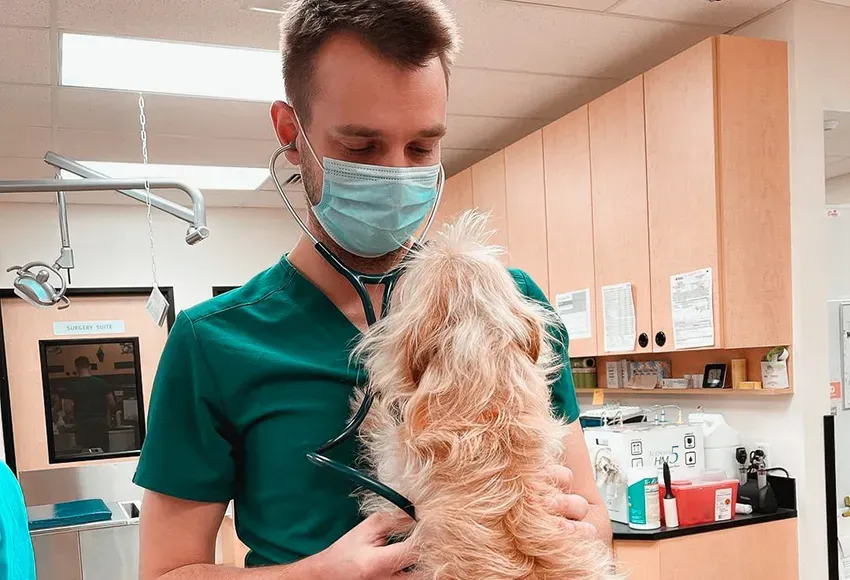On September 15, the Journal of the American Veterinary Medical Association (JAVMA) released information regarding the continuing veterinary staffing shortages that have been occurring throughout the nation. For pets and their parents, this means they cannot get appointments as easily as before, but what does this mean for veterinary clinics and staff as a whole?
According to JAVMA, veterinary workers are experiencing high stress and feelings of being both overworked and overwhelmed. A good portion of veterinary hospitals are operating with fewer staff members and greater turnover rates. Emergency vet clinics have been hit the hardest, due to a constant flow of patients for urgent and nonurgent visits, which also contributes to longer wait times.
The "pandemic pet" boom
When COVID-19 hit the United States, endless lockdown and stay-at-home orders were issued by state officials, in addition to physical distancing recommendations. With more people seeking companionship during that time of isolation, reports of skyrocketing pet adoptions swept the media.
Animal shelters are the main source of pet adoptions. The second most common source is receiving a pet from a relative or friend; breeding and taking in stray animals was third.
24PetWatch and Best Friends Animal Society released data regarding the rates of pet adoptions at animal shelters. According to their data, the number of pet adoptions from animal shelters in 2020 was the lowest in the past five years. Approximately 2.3 million animal shelter adoptions occurred in 2020 (46% were dogs and 54% were cats), while in 2019, approximately 2.8 million pets were adopted from shelters (49.5% were dogs and 50.5% were cats).
If everyone was looking for a companion during COVID, why did the rates drop? During the pandemic, animal shelters experienced 32% fewer dog intakes and 23% fewer cat intakes, which may be attributed to fewer people giving away pets and fewer stray animals getting picked up.
In addition, when COVID-19 first hit, many veterinary facilities were accepting urgent pet visits only, creating a tremendous backlog of patients. More time spent at home with pets allowed owners to see and respond to health issues at more rapidly and think more critically about their pet's overall health. Pet owners also received stimulus payments that were used as disposable income on their furry friends.
The switch from in-person visits to virtual appointments due to COVID-19 also made for fewer prospective pet adopters. As a result, the percentage of available pets at shelters rose, yet the actual number of adoptions declined.
Appointments can be hard to come by
According to VetSuccess – an analytics company that reviewed national data on over 4,000 vet facilities – the average number of appointments booked increased by 4.5% from 2019 to 2020. In comparison to January through June of 2020, appointments rose by 6.5% during that same timeframe in 2021.
The majority of revenue growth has come from existing patients: pet parents have invested in a greater number of vet products and services (and a higher quality of products and services), while the average price of the products and services has increased.
COVID-19 safety and prevention assisted with creating barriers
Animal healthcare facilities switched to curbside pickup to help reduce the spread of COVID-19, but it limited the efficiency and productivity numbers of staff – which are measured in patients seen per hour. In addition to curbside pickup, staff members were split into rotating teams, and more time was spent disinfecting exam rooms and sanitizing surfaces.
The loss of staff members due to COVID-19-related illness also helped create strain in the industry. Staff would call out sick, have to quarantine, or stay at home for personal reasons, such as tending to children due to the loss of in-person learning.
There have also been reports of staff burnout due to the increased demand for services. The average turnover rate for veterinarians is twice as high as for physicians in medical practice. Vet technicians also have one of the highest turnover rates out of all healthcare positions.
How will the veterinary staffing issue be tackled?
For burnout, JAVMA recommends paying employees appropriately based on their qualifications and the tasks they are doing. Employers are recommended to increase engagement with employees, building teams, and improving leadership skills.
The simplest solution to staffing shortages might be to hire more veterinarians. However, the question remains: will the increase in demand be permanent? Veterinary facilities remain on backlog due to the pandemic, so the answer remains uncertain.
JAVMA encourages facilities to use resources efficiently. Space needs to be freed up for vet technicians and advanced veterinarians so they can focus on tasks like diagnosing, prescribing medications, and performing surgeries rather than answering phones and scheduling appointments. It is also recommended that offices utilize technology as much as possible for things like purchasing, accounting, and even telehealth services.


